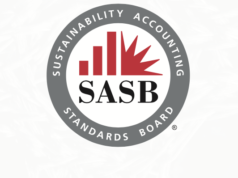INSIGHT by
〉Claudia Zeisberger, Professor of Entrepreneurship & Family Enterprise at INSEAD and Academic Co-Director of INSEAD’s PE/ VC center (GPEI)
〉Ian Potter, Distinguished Fellow at INSEAD’s Global Private Equity Initiative (GPEI)
〉Sara Lim, Research Associate at INSEAD’s Global Private Equity Initiative (GPEI)
The article was first published by the CFA Institute via CityAM am London.
| Environmental, social and governance (ESG) investing has become mainstream, with the global pool of exchange-traded fund (ETF) assets under management considered ‘ESG-focused’ now reportedly exceeding $100bn (£76.2bn). Companies are raising their ESG credentials in AGMs and annual reports and on occasion, companies perceived to have strong ESG credentials appear to enjoy enhanced valuation compared to their peers.
Private equity (PE) asset managers have also been actively developing products to meet increasing demand in the ESG space. Many of the largest and most prominent private equity firms have responded to increasing investor interest with new ESG-themed products such as impact-focused funds. Many private equity funds assert that they now incorporate ESG considerations into their investment processes, for example by becoming signatories to the United Nations Principles for Responsible Investment (UNPRI) and asking the companies into which they invest whether they have designated policy frameworks.
| ESG surveys paint a mixed picture
This would suggest that we are in the early stages of developing the ways that institutional capital is allocated and investment decisions are made in the ESG space.
Worryingly, the Institutional Investor survey also found that of 431 PE firms that directly invest and commit to the UNPRI’s six principles, fewer than one in eight publicly disclose that they receive ESG reports from their portfolio companies, and only 16 firms shared whether ESG issues impact financial performance. So, what is the current reality? Is there substance or only form to ESG integration?
| Investors are right to have reservations
As with any young market, there is a wide dispersion of approaches and information is often compartmentalised and illiquid. We are seeing the same phenomenon in the integration of ESG into private equity.
While limited partners (LPs), the investing base in the PE world, have historically been the early adopters and advocates for higher standards of ESG in their portfolios, it’s relatively recently that mainstream general partners (the PE firms themselves) have developed products and approaches to accommodate that demand.
Much of what appears to be happening is still immature and more theory than established best practice. So, the question of whether current ESG investment practices are more sizzle than steak is a fair one.
The current support for responsible investing appears to be a combination of several factors. The holy grail of investments that not only generate acceptable rates of return to owners and advance the better interests of stakeholders and society is obviously appealing. But dangerously untested and under-explored.
As with prior crises, we’re again hearing the glib reassurance that ‘this time it’s different’. Words that for investors should cause a real pause for thought. Put differently, investors should remain sceptical of the outperformance or risk reduction claims that are increasingly heard around responsible investing. The varied approaches are too diverse, ill-defined and it’s simply too soon to say.
INSEAD’s Global Private Equity Initiative (GPEI) recently expanded on its first ESG report, published in 2014, to include in-depth conversations with LPs and general partners (GPs – the partners responsible for investment decisions at private equity firms) in INSEAD’s network, mapping both sides’ perspectives on the changing nature of ESG in private equity.
While opinions on best practices are currently far too varied to draw strong conclusions about what may become industry adopted standards, we highlight what we feel are better approaches and where the gaps for further effort may be.
Some common principles for GPs with strong ESG approaches included: high levels of engagement from senior management; tight linkage between ESG principles and the investment process; tracking company-level metrics post investment and regular reporting on those metrics to LPs and other stakeholders. What is surprising is not the content of that list of principles, but how rarely all are found in practice. This only serves to highlight the immaturity of the ESG principles within the investment world.
| Standardisation will help
For those working and investing in private equity, the inclusion of ESG criteria in the investment screening and decision-making process is often a recent adaptation and a learned process. In some cases, it amounts to little more than an administrative box-checking process.
As the industry matures, we hope that approaches will become more standardised and more authentic, with skills more broadly disseminated. For now, there is still an experience gap that makes implementation challenging.
More promising is the rate of change. One of the early challenges identified in the space is the plethora of metrics, standards and styles of reporting on ESG. Recently, several industry leaders agreed to make more collaborative efforts to harmonise measurement standards.
Regulators, too, are paying attention: the International Organisation of Securities Commissions recently announced that it will attempt to ‘harmonise disclosure’ on sustainability risks. We interpret the attention from regulators as both evidence of the market’s growth and a concern over the lack of clear standards and the resulting potential for abuse or ‘greenwashing’.
Positive change is possible and happening. Increasing the transparency and rigour of assessment and reporting will benefit performance, as they allow for clear targets to be established and improve investor confidence.
For the moment, while we are optimistic and supportive of developing responsible investing themes, we are cautious about the more atmospheric claims made by private equity firms and sceptical of the ease of implementation. While the scope and ambition of ESG integration in private equity is appealing, the practices and processes are still developing and there are many possible pitfalls and mistakes yet to be learned from.
| brief bio
Professor Claudia Zeisberger is an Author, Angel Investor and Professor of Entrepreneurship & Family Enterprise at INSEAD; she is the Founder and Academic Director of the school’s private equity centre (GPEI). Before joining INSEAD in 2005, she spent 16 years in global investment banking.
Passionate about education, she devotes much of her time advising startups & is a mentor in Google’s Startup Accelerator. She ensures resilience of businesses in her work with corporates & institutional investors.
Professor Zeisberger teaches the Private Equity & Venture Capital, Corporate Turnaround and Risk Management electives and has been awarded the “Dean’s Commendation for Excellence in MBA Teaching at INSEAD” annually since 2008. Professor Zeisberger’s books ‘Mastering Private Equity – Transformation via Venture Capital, Minority Investments & Buyouts’ as well the corresponding case book ‘Private Equity in Action have become THE standard textbooks.
| All posts are the opinion of the author. As such, they should not be construed as investment advice, nor do the opinions expressed necessarily reflect the views of CFA Institute or the author’s employer.
| This is an article written by professionals for investment professionals. It is a contribution from external subject matter experts who do not work for CFA Institute, but may be a CFA charterholder as well as a member of a CFA Society. All are experts in their field and strive to deliver useful insights that help investment professionals make better decisions.
| All opinions expressed are those of the author. investESG.eu is an independent and neutral platform dedicated to generating debate around ESG investing topics.










